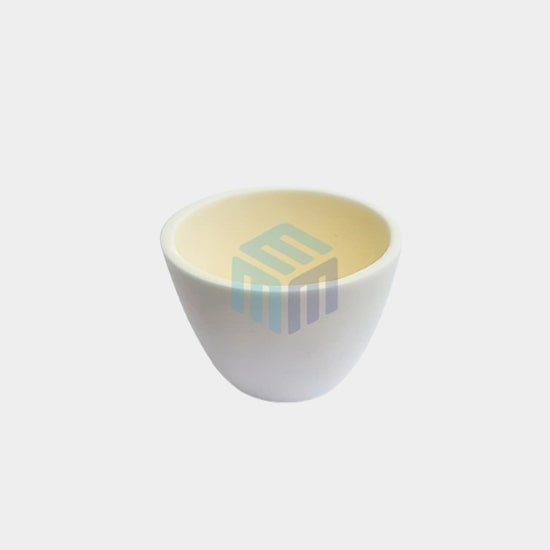Alumina crucibles find extensive use across various industries and laboratories due to their excellent thermal and chemical properties.
Here are some common uses and applications of alumina crucibles:
- Melting and Heating: Alumina crucibles in India are widely used for melting and heating processes in the metallurgy, ceramics, and glass industries. They can withstand high temperatures, making them suitable for melting metals, alloys, and ceramic materials.
- Sample Preparation: In laboratories, alumina crucibles are used for sample preparation in analytical techniques such as gravimetric analysis, fusion, and ashing. They provide a stable and inert environment for sample decomposition and analysis.
- Chemical Reactions: Alumina crucibles are employed in chemical laboratories for conducting various chemical reactions, including synthesis, decomposition, and combustion reactions. Their chemical inertness and resistance to corrosive chemicals make them ideal for such applications.
- High-Temperature Furnaces: Alumina crucibles are compatible with high-temperature furnaces used in research and industrial settings. They can withstand temperatures up to several thousand degrees Celsius, making them suitable for sintering, annealing, and heat treatment processes.
- Casting and Molding: In foundries and casting operations, alumina crucibles are used for casting and molding metals and alloys. They provide a stable and refractory container for molten metal during the casting process.
- Semiconductor Manufacturing: Alumina crucibles are utilized in semiconductor manufacturing processes for growing single crystals, such as silicon and gallium arsenide. They provide a controlled environment for crystal growth at high temperatures.
- Laboratory Research: Alumina crucibles are essential in scientific research for various applications, including materials science, chemistry, geology, and environmental analysis. They are used for experiments involving high temperatures, corrosive substances, and thermal stability.
- Thermal Analysis: Alumina crucibles are employed in thermal analysis techniques such as differential scanning calorimetry (DSC), thermogravimetric analysis (TGA), and thermal conductivity measurements. They help in studying the thermal properties and phase transitions of materials.
Overall, alumina crucibles play a vital role in diverse industries and laboratories where high-temperature, chemical-resistant containers are needed for processing, analysis, and research purposes.
M-Kube Enterprise is an Indian company catering customized laboratory products, laboratory consumables, and laboratory solutions in India, Australia, New Zealand, Singapore, Malaysia, South Korea, the USA, Dubai, the Philippines, Indonesia, and Vietnam.





